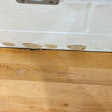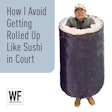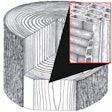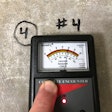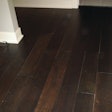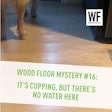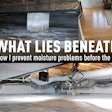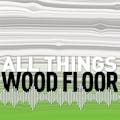The Problem
I got a call to inspect a maple engineered longstrip floor that was evenly cupping throughout a five-year-old Sedona, Ariz., home. The homeowners said the fillets that comprise the boards were separated, and there was space between each board.
The Procedure
The boards were glued to the OSB substrate of a pier-and-beam foundation, and the installer said that at the time of the wood floor installation, the crawlspace was well-ventilated and dry.
The Cause
During my first visit to the home, moisture testing with a pin meter of the structure and the floor did not provide useable moisture readings. Modern moisture meters fail to accurately measure moisture contents below 6 percent. The relative humidity (RH) and temperature inside the house was 18 percent and 79 degrees Fahrenheit (F), respectively. The RH and temperature in the crawlspace was 24 percent and 90 degrees F. The whole-house humidifier was set at 50 percent and had just been cleaned and checked by the refrigeration company that installed it. Cupping measurements ranged between 0.01 inch and 0.02 inch across the 7-inch board width. The separation between the board sides measured as much as 0.01 inch. The separation between the fillets mid-board were a few thousands of an inch wide.
Sixty days later, the homeowners called stating that the floor was now flat. When I returned, moisture measurements of the hardwood flooring and its support structure were all less than 6 percent. The floor was flat, and the separation between the fillets and between the boards was nonexistent. The RH and temperature measurements inside the house on this visit measured 28 percent and 78 degrees F. The same measurements of the crawlspace were 30 percent and 82 degrees F.
Cupping is caused by a moisture imbalance between the top and bottom of the hardwood flooring. An equilibrium moisture content (EMC) chart indicates that the differential between the top of the flooring and the bottom of the flooring during the first visit would have been about 1 percent. A 0.5 percent differential is sufficient to initiate cupping. An EMC chart does not predict the existence of any differential using the environmental numbers taken during the second visit.
The cupping and associated gapping on the first visit was the result of the top of the hardwood flooring having dried out. Shrinkage of the face of the flooring pulls the edges up, causing cupping, and the cupping makes the gaps from the shrinkage look even wider, because the edges are pulled up over a material that's still wider below. This could not be measured with a pin meter. In this case, standard hygrometer readings, an EMC chart and my personal observations of the gaps were the only tools available that could be used to support the conclusion that the drying of the face of the flooring was the cause of the problem.
How to Fix the Floor
Since home humidifiers are notoriously ineffective at maintaining the humidity above 30 percent, there is no known fix for this issue. Seasonal cupping of this type must be considered just as normal and natural as seasonal gaps between boards.
In the Future
Seasonal changes in the wood flooring, whether the product is solid or engineered, should be discussed with those purchasing the product so they know what to expect.




















